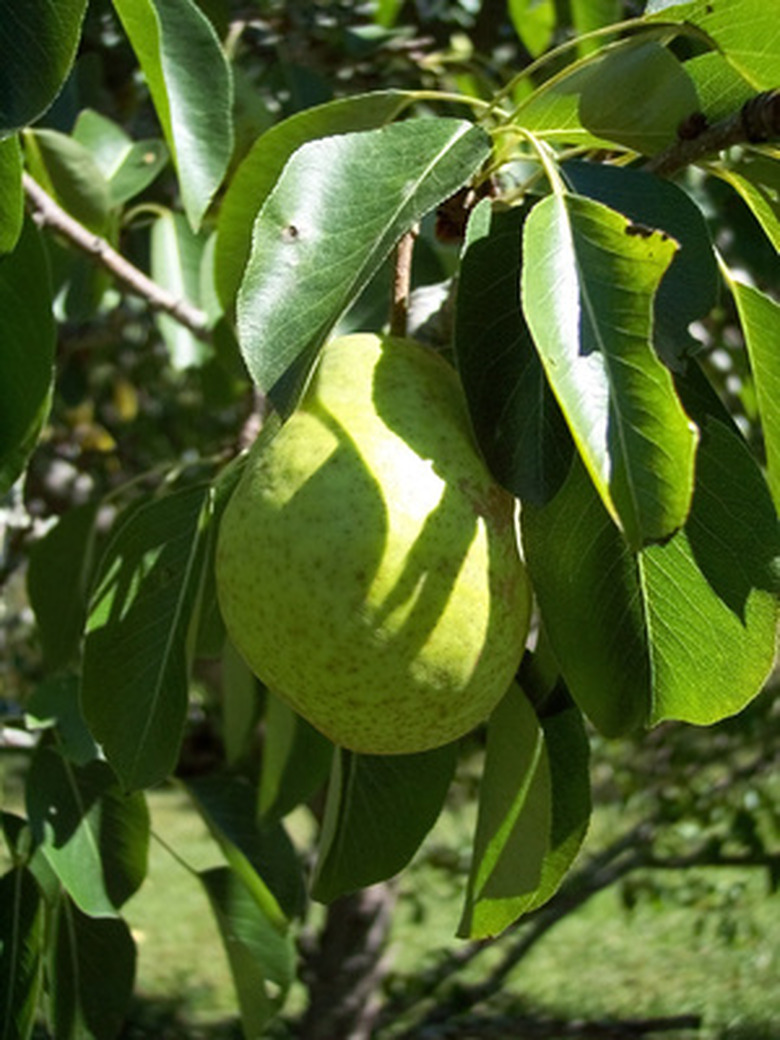Pear Tree Leaf Insects
Pear trees, whether fruit-bearing or ornamental, are a common part of the landscape. They line streets, parkways and dominate yards everywhere. Their spring blossoms, summer shade and fall fruit provide a variety of benefits. Pear trees are susceptible to certain leaf-eating insects, which can cause serious damage to the tree. Recognition of these pests and their treatments is critical to controlling the problem.
Beetles, Caterpillars and Moths
Beetles and the larva of moths can cause considerable damage to the leaves of pear trees. Coddling moths lay their eggs on the leaves. The hatching larva of the first generation of the season feed on the leaves. Japanese beetles and plum curculio, which is also a beetle, feed on the leaves, rending them hole-ridden. Caterpillars, leafrollers, inchworms and webworms also feed on leaves of the pear tree.
- Pear trees, whether fruit-bearing or ornamental, are a common part of the landscape.
- Japanese beetles and plum curculio, which is also a beetle, feed on the leaves, rending them hole-ridden.
Mites and Other Insects
A number of mites, including the Eriophylid mite, pear rust mite, pear leaf blister mite and spider mite, all feed on the leaves of the pear tree. Scales, pear slugs and several types of aphids use pear leaves for food as well. An infestation by one or more of these insects can have serious results.
Treatment
There is not a single treatment that is effective on all pear leaf insects. Permethrin and carbaryl are insecticide chemicals sprayed following petal fall that are effective against codling moths. Horticultural oils can be useful in combating scales, mites and, in conjunction with insecticide, pear psylla. Insecticidal soaps are sufficient for dealing with aphids and pear slugs.
- A number of mites, including the Eriophylid mite, pear rust mite, pear leaf blister mite and spider mite, all feed on the leaves of the pear tree.
- Permethrin and carbaryl are insecticide chemicals sprayed following petal fall that are effective against codling moths.
Prevention
Healthy pear trees are the best defense against insect problems. Follow a regular pruning program to ensure proper light and air circulation. Along with regular watering and fertilizer applications these measures will maintain the health of the pear tree, making it less appealing to insects. Injuries caused by mowing equipment or jagged pruning cuts can be an invitation to insects. Baits and traps can lure harmful insects away before they attack the tree.
Significance
The danger with any leaf-eating insect is a certain amount of defoliation. Some insects merely damage some leaves while others are more voracious. Once a tree loses enough leaves, its ability to photosynthesize and produce its own food diminishes. This in turn leads to poor health and invites other insects and diseases to make their home in the tree.
- Healthy pear trees are the best defense against insect problems.
- Along with regular watering and fertilizer applications these measures will maintain the health of the pear tree, making it less appealing to insects.
